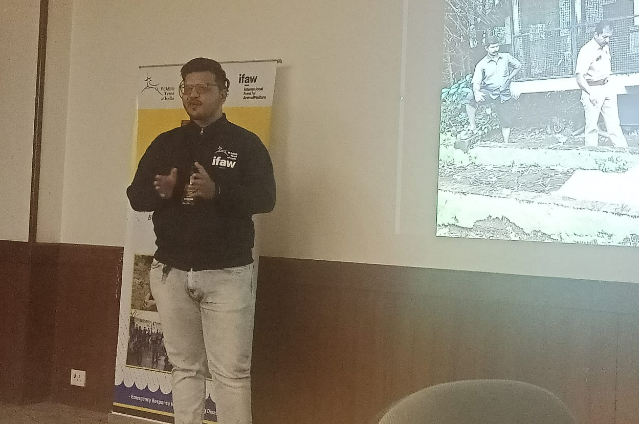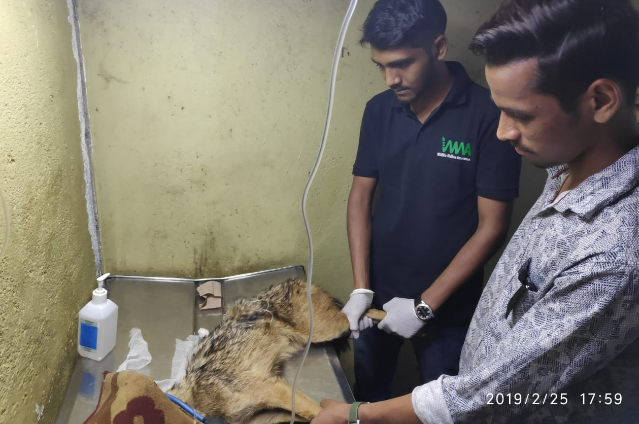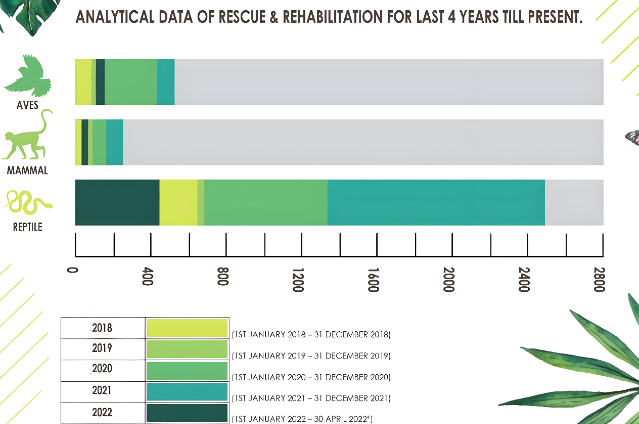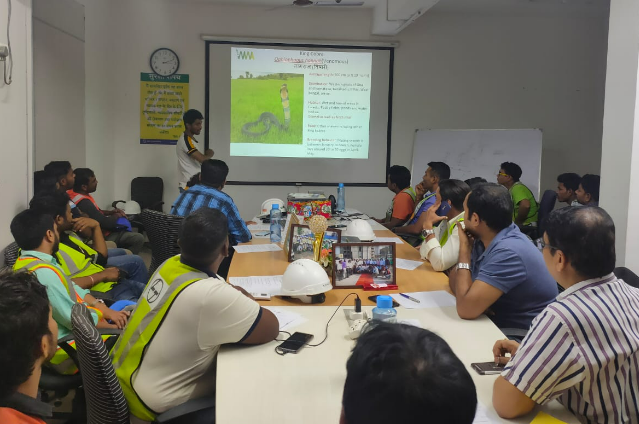The world we live in is an integrated network of several ecosystems and species. The actions of one ecosystem or species have a direct or indirect impact on another. Whether it’s a small worker bee somewhere in the forest, a giant blue whale in the deep, or scavenging vultures who clean the environment, each one of them and others like them has significant roles to play in the ecosystem of Earth. However, the human species have emerged as one of the biggest reasons for the destruction of such wildlife and the overall ecosystem. Our actions have brought steep declines in our wildlife populations and we have already started witnessing its grave effects. Presently, we are only left with options of protection and conservation of wildlife to reverse the loss of biodiversity. In recent years, the most important solution has emerged to involve local communities and organizations to benefit nature and the protection and conservation of wildlife. To be globally significant in maintaining environmental sustainability, animal welfare, and conservation of natural resources, one local organization named Wildlife Welfare Association is working diligently.
WILDLIFE WELFARE ASSOCIATION
Wildlife Welfare Association (WWA) is a non-profit organization that conservates, protects, and rescues wildlife. The organization which started its work in 2013 by rescuing wildlife in the city of Thane in Maharashtra, has today expanded its work to several other regions and states. The organization provides 24x7 services for wildlife rescue and rehabilitation. It also has well-experienced teams who are completely dedicated to wildlife rescue and welfare. All the rescue activities are carried out as per the standards of wildlife protocols with utmost caution and proper equipment. Due to their precise work, the organization also helps multiple government agencies like Forest Department, Municipal Corporation, Police Department, Disaster Management, etc, regarding wildlife cases.
The WWA has expert teams in Mumbai, Thane, Navi Mumbai, and Pune working towards the rescue and rehabilitation of wildlife. It also has a transit center at Manpada in Thane. The teams at different locations often receive animals in distress conditions, injured and dehydrated due to several man-made or natural conditions. The WWA also has a team of veterinarians who provide assistance in such cases and release them back into the wild.
RESCUE AND REHABILATION

Image by WWA
The Wildlife Welfare Association determinedly works for the welfare of diverse wildlife by attending to a wide range of wildlife emergencies resulting from natural or man-made causes. In the conflicts of the urban jungle, numerous displaced animals are often vulnerable to conflicts with humans and sometimes fall prey to poachers as well. Many also fall victims to accidents and displacements also arise due to conflicts with humans and animals being stranded in human-modified environments.

Image by WWA
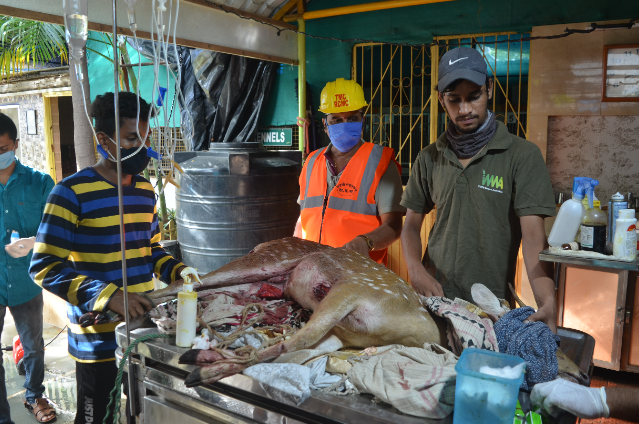
Image by WWA
In the last few years, WWA has successfully rescued and rehabilitated more than 8000 birds and animals. Most wildlife that is rescued is rehabilitated by the NGO with the goal of eventual release back into the wild.
BATTLING WITH THE WILDLIFE TRAFFICKING
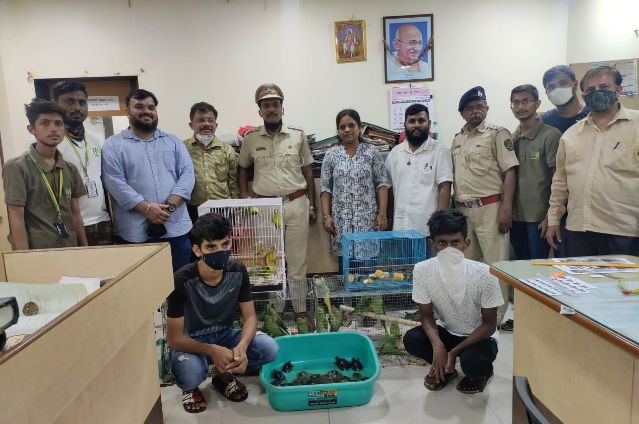
Image by WWA
Wildlife trafficking, which is the illegal trade of wild animals and plants or their parts has a huge negative impact on the environment. India is an integral part of the Convention on International Trade in Endangered Species of wild fauna and flora (CITES), yet still, it is among the top 10 for wildlife trafficking by air and the top 20 nations for overall wildlife trafficking. Wildlife exploitation has been occurring for ages and now the demand is at all times rising. The Wildlife Welfare Association works against such rising illegal trade of animals in different regions. The WWA has been working closely with bodies like the Wildlife Crime Control Bureau and Wildlife Trust of India. The organization also helps the Forest Department to monitor and control such activities by performing raids and helping Forest Department to rehabilitate the rescued animals back into their natural habitat.
EMERGENCY DISASTER RESPONSE (EDR)
The Emergency Disaster Response (EDR) aims for an emergency response to provide immediate assistance to maintain life, improve health and support the morale of the affected living being in any natural disasters, and such disasters cause a lot of difficulties to wildlife. For these situations, the Wildlife Welfare Association has also formed an EDR team, that is always ready to provide emergency rescues and relief services to wildlife, even in the situations like floods. EDR also takes on any and all types of challenging missions like crocodiles and leopard rescues. This team is activated whenever there is a rescue that takes multiple days and requires expertise. And the best part about this special team is that it is a different team altogether than their general rapid rescue team. And because of a different unique EDR team, the wide-ranging rescues never stop and don’t get overdue generally.
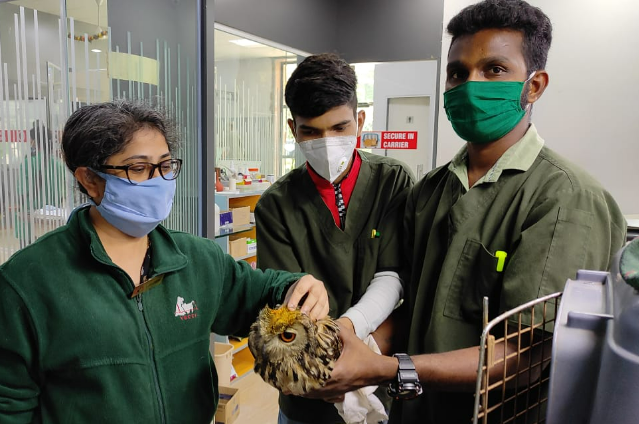
Image by WWA
The WWA utilizes a dedicated wildlife ambulance which enables the organization to provide immediate first aid and make help provide animals the needed medical attention. The urban landscape of the region offers a lot of injuries to animals, and in such cases, emergency services by an ambulance which was provided by one supporting NGO named PAWS can be extremely useful to save lives.
WILDLIFE RESEARCH AND DIGITAL DEVELOPMENTS
The Wildlife Welfare Association believes in wildlife research and data gathering which is important to understand the dispersal and diversity of the urban landscape of cities. The WWA has published a research paper for a Red Morph of Buff Stripped Keelback Snake showing the color morphism in reptiles. The organization has also recorded a rare bird like Bridled Tern with the collaboration of BNHS. Such research helps to study the behavior and the impact of climate change on wildlife. To understand the distribution of various species of wildlife, the WWA has also developed its own mobile application. This app also helps to record and contact Forest Department on real-time rescues. The collected data is valuable for researchers and further studies of different types of animals. The WWA identifies and targets its awareness campaigns with all the data they obtain from these developments.
AWARENESS PROGRAMS!
In the beginning, the WWA mostly focused on the rescue and rehabilitation of animals, but as they progressed, the organization released that spreading awareness is more important than rescue operations. The NGO conducts a ‘Zero-Bite Awareness Campaign’ to clear the misunderstandings of people toward snakes. There is another campaign titled ‘#Don’tBuyTrouble’ which focuses to raise awareness about illegal wildlife trafficking. The organization also arranges awareness programs in different urban and rural regions to help make people aware of the wildlife around them.
Over the years, we humans have damaged the environment extensively. We have spoiled our environment so much that most wildlife is either extinct or threatened to vanish. According to the International Science Policy Platform on Biodiversity and Ecosystem Services (IPBES), over a million species of animals and plant life are now threatened with dying out, more than ever before in human history. And to avoid more damage, the importance of wildlife conservation cannot be underrated and it has become vital to undertake the rescue and rehabilitation of wildlife. To continue these activities to save wildlife the NGO needs support and funds to be able to conduct rescue operations and rehabilitation programs. It is significant to understand that such NGOs generate resources which include funds, goods, and volunteers, from a range of tracks such as donations and other modes of support from charitable donors. The Wildlife Welfare Association also accepts donations from people who are willing to donate for the conservation and protection of wildlife. From such fundraising activities for wildlife to extending awareness about how to protect and conserve wildlife, we all can do our part in protecting the wildlife in the world we live in. And with the support of such conscious people about our environment, we can certainly ensure a future worth celebrating!


